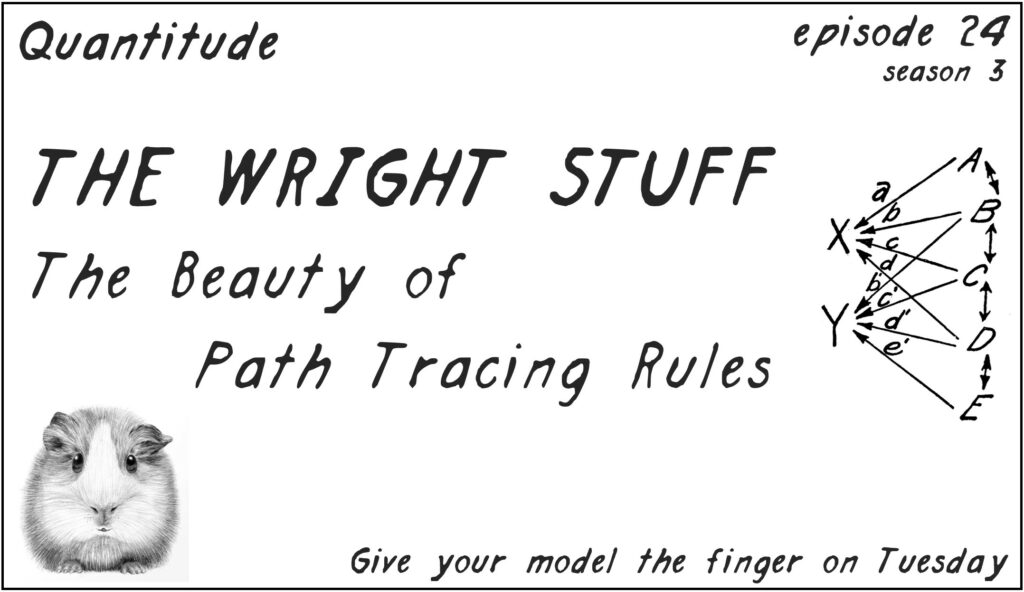In this week’s episode Greg and Patrick explore Sewall Wright’s path tracing rules as an alternative to covariance and matrix algebra, including how the rules work and the tremendous insights they can provide toward understanding a model. Along the way they also discuss the Unabomber, Crate and Barrel, grocery lane profiling, tedious as poop, throwing dead cats, senior animal husbandman, using your fingers, creepy guy in an alley, sweat pants vs. suits of armor, getaway car drivers, hold my Guinea pig, chalkboard contests, Western Kansas, and getting tazed.
Lightly-Edited Episode Transcript
We provide a lightly-edited and imperfect audio transcript of the episode available here. This is not an exact representation of the audio, but does provide a searchable document with identified speakers and associated time stamps.
Additional Show Notes
Alwin, D. F., & Hauser, R. M. (1975). The decomposition of effects in path analysis. American Sociological Review, 40, 37-47.
Bollen, K. A. (1989). Structural equations with latent variables (Vol. 210). John Wiley & Sons. (see especially Chapter 2)
Duncan, O. D. (1966). Path analysis: Sociological examples. American Journal of Sociology, 72, 1-16.
Kenny, D. A. (1979). Correlation and causality. New York: Wiley. (can be freely downloaded here; see especially Chapters 2 and 3).
Newsom, J. (2020). A nice few pages of notes on path tracing rules available here; he’s also a wonderfully nice guy and an amazing jazz guitarist…see here.
Wolfle, L. M. (1999). Sewall Wright on the method of path coefficients: An annotated bibliography. Structural Equation Modeling: An Multidisciplinary Journal, 6, 280-291.
Wolfle, L.M. (2003). The Introduction of Path Analysis to the Social Sciences, and Some Emergent Themes: An Annotated Bibliography, Structural Equation Modeling: A Multidisciplinary Journal, 10, 1-34
Wright, S. (1918). On the Nature of Size Factors. Genetics, 3, 367-74.
Wright, S. (1934). The Method of Path Coefficients. Annals of Mathematical Statistics, 5, 161-215.

